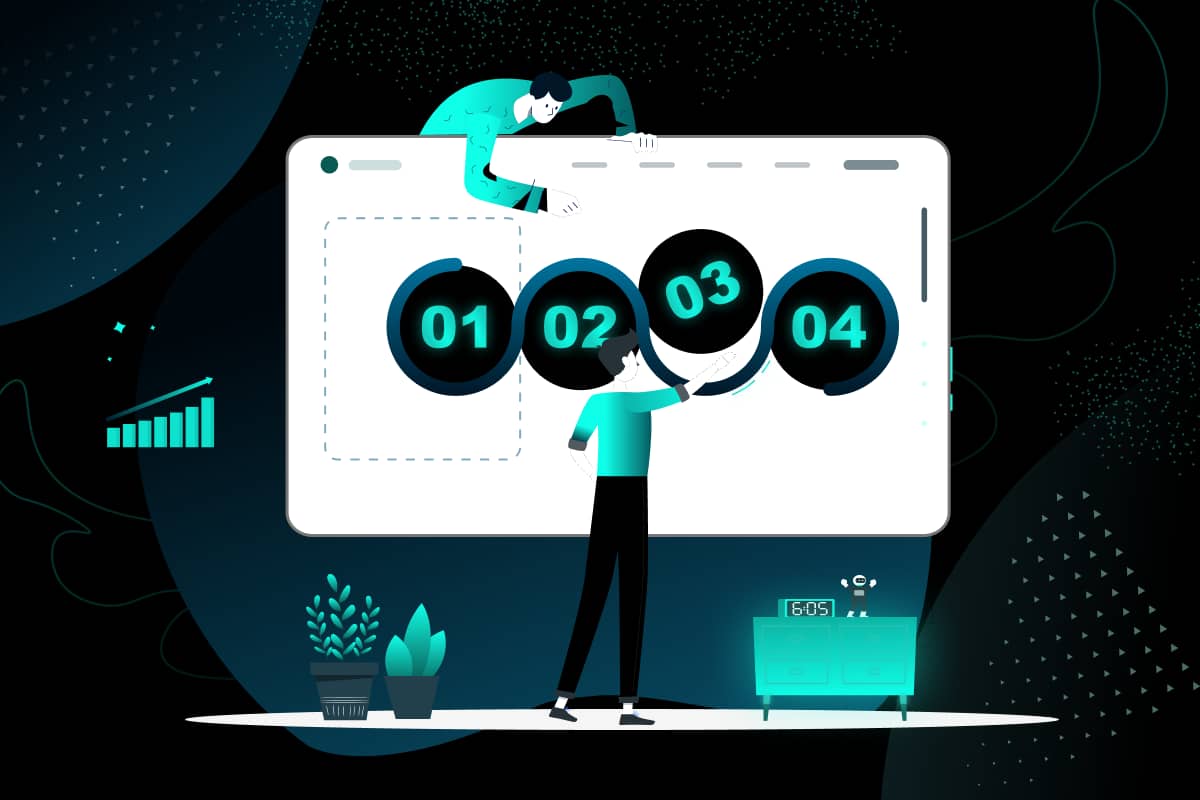The pandemic has made us change many things in our lives. Physical get-togethers have changed to virtual meetings, offices have made the facility to work from home, and physical shopping is changed to online.
In such a situation eCommerce UX design (user experience) plays a vital role in improving the shopping experience. If you pay attention to user experience and stick to the standards of eCommerce UX design principles then it is obvious to see your growth.
eCommerce UX is not just a website design it is more than that. The users’ journey of searching for a product starts here and ends with a purchase. It also includes post-purchase activities like delivery of the product once the purchase is done, return if the product does not meet user needs, and also exchange.
Let’s dig in and understand why is eCommerce UX essential and what are UX strategies for eCommerce growth.
Why is eCommerce UX essential?

- What if more than 50 % of your customers don’t return to your website just because of bad UX?
These people are the ones who visited and decided not to come. Just think out of these if at least 20% of people spread the word about your bad UX.
No one can afford this loose just because of bad UX. Good UX can get you good referrals. Word-of-mouth referrals can make a huge difference. - Great eCommerce UX design will generate more conversions and improve the rates of returning customers in the future.
- Easy-to-understand design and simple navigational structure build satisfaction in customers.
Be it fashion, food, or cosmetics all industries have many people selling identical products at the almost same price as yours. So, to stand out in your field, you must have exceptional UX strategies that help to achieve good growth.
The need for eCommerce UX design for business growth makes it essential to understand the user needs and create an enjoyable, easy, and consistent shopping journey with an efficient shopping experience.
eCommerce UX design strategies for growth
Today it is essential to stand out in the market of your niche and retain your customers to use your eCommerce website.

How do you do that?
Well, we will take you through a few essential practices for eCommerce UX design for eCommerce growth.
1. Simple navigation to retain the customers:
Good navigation helps boost confidence in using your products. If the users are comfortable using your website it is obvious they spend more time there.

More time on the website less bounce rate. Understanding the website should not be difficult for common users.
Business owners and one who has built the website can understand how the website works but not the common users. So, keep your eCommerce UX design simple and easy to understand.
2. Optimize functionality for UX design:
For the success and failure of any eCommerce website, UX design plays a vital role.
Imagine you are purchasing something and the website takes more time to load. Will you still be on the same website for purchases?

I would switch to another website with a quick loading time.
There is a study that 47% of users expect loading time to be less than 3 seconds and 39% of users don’t wish to engage themselves with such websites.
According to experts one second of delay in eCommerce sites can cost around 4% of loss in revenue.
So have an optimal load time. You can achieve this with plugins that help to cut down unnecessary codes.
3. Clear call-to-actions:
If you see many call-to-action buttons on a single page it’s obvious you feel forced to buy the product. That doesn’t mean you should not have CTAs at all.

Ha ha, confused?
Many small businesses don’t include CTS which is a disadvantage for them. Few businesses fill their website with too many CTAs which distracts visitors from your website.
So, plan correctly with clear and well-displayed CTAs.
While designing CTAs choose the right colors and location for the CTAs to be placed. There is a study by Hubspot, the red color converted more users compared to green.
The number of CTAs per page should also be taken care of. You can test what is better for your website here.
4. Focus on checkouts and payments:
Have you ever thought of making the checkout page easy?
If not do it now.

Effective checkout pages drive more conversion and sales. Focusing on checkouts and payments helps you make the customers buy from you frequently.
Follow checkout eCommerce UX design practice.
- Include multiple payment options – Credit cards, debit cards, PayPal, etc.
- Help users save billing information on your site securely to make the next purchase easy.
- Don’t confuse the users with distractions, keep the checkout page simple.
- Try to have fewer fields in the form.
- Mention the amount clearly, don’t hide any price.
- Most important add a clear call-to-action button.
5. Personalizing UI (User Interface):
Making users buying experience memorable is all we want as business owners. Personalization helps businesses build a healthy relationship with buyers and also understand what they are expecting.

When you are searching for any product, you initially start with I want this and then you start digging in more for a variety. In today’s time, customers have infinite options to choose from. This is the right time to gain loyalty with personalization.
When you allow users to select what exactly they are searching for in fewer steps with the personalization they will be happy.
Great examples of personalization are Reddit and BBC news. With personalization, these websites provide controlled interaction and a better User experience.
6. Minimal is the best: Try to minimize user efforts:
Who doesn’t like to be called cool? Our websites are not exceptional. Minimal websites are referred to as the coolest websites.
Less is good and fast in eCommerce. If you overload one page with too much information no one is going to read it for sure.

Minimalism helps to focus on the product you are selling as you cut down on unnecessary information.
With this always try to:
- Show correlated products.
- Make fewer numbers of clicks.
- Keep sign-in sign-out easy.
- Use colors and layouts that are eye-catching.
If you take users to their destination with no effort, they will be happy but while focussing on minimalism don’t miss important navigation buttons.
7. Add high-quality pictures:
Images play important role in eCommerce UX design. As they say, a picture can speak better than 1000 words.

A single image can give clear information than a set of words. Convey your product through high-quality images.
Don’t miss out to:
- Show a 360-degree view of the product.
- Give proper zoom – No less, no more.
- Show the product in different colors and sizes.
- Don’t hide any special features of your product.
8. Save wishlist:
Maintaining a wish list of products helps to increase conversion.
Thinking how is that?

There are many reasons to leave checkout pages in between. In such cases, the checkouts get postponed. Don’t think that you lost the customer, take advantage of this situation and allow them to save the product.
They might have left the purchase page for now but when they come to purchase the same product, you are helping them.
In another case, they come to buy but the product is not available, ask them to save and notify them when the product is available.
A Wishlist helps shoppers continue shopping from where they have left it and hence enhances user experience.
Final Words
You have a strong website for your company, now think of driving more visitors, try to convert these visitors into customers, and then strategize to keep them coming back to your site.
As mentioned above personalization is one good decision for attracting people to your website. Show your new products with clear details.
Don’t forget to engage your users, and offer discounts, coupons, and rewards.
We at Wilson wings help you build an eCommerce website with all the best practices. To make your eCommerce website a big one in the market reaches out to us now.





